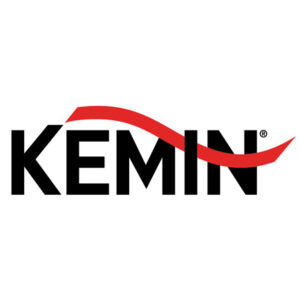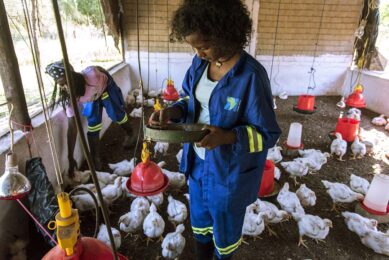Preventive intestinal health through a multifactorial nutrition based health approach
![Nutritional strategies can be used to ( manipulate the ( microbial population of the gut.<br />[Photo: RBI]](https://www.poultryworld.net/app/uploads/2021/04/002_66_rb-image-2814744-848x565.jpeg)
[Photo: RBI]
It seems inevitable that the use of medication in animal production worldwide will decline in the future and preventive health management ?strategies will be the way forward. Where legislation is not already in place, consumer pressure is ?building up on the use of antimicrobials.
It is essential to sustain healthy intestinal microflora by suppressing the pathogenic bacteria and promoting the beneficial bacteria. Good gut health is closely linked to the normal ecological equilibrium of the gastrointestinal microflora. To maintain the equilibrium a wide range of different micro-organisms in the GI tract is very important. One of the nutritional strategies used to achieve this is direct manipulation of the microbial population. The addition of a direct fed microbial or probiotic provides essential support in suppressing pathogenic bacteria while promoting beneficial bacteria for gut health maintenance.
The effect of CLOSTAT
Kemin has developed CLOSTATTM, an active microbial containing a proprietary strain of Bacillus subtilis that was developed as a nutritional solution to maintain intestinal microflora, balance gut integrity and improve animal performance. In vitro and in vivo research studies confirm that CLOSTAT can reduce the population of pathogenic bacteria such as Clostridium perfringens while maintaining the growth of beneficial bacteria such as lactobacilli and bifidobacterium.
Despite the benefits that have been observed when using AGPs for the improvement of animal performance, AGPs can create an imbalance in the intestinal microbiota. This is caused by eliminating all gram positive bacteria (pathogenic and beneficial), resulting in an overgrowth of gram negative bacteria. An ideal replacement for AGPs would be products that can eliminate pathogenic gram positive bacteria only, maintaining the beneficial ones unharmed. This would result in the least disturbance of the intestinal microbial environment. In the absence of AGPs, C. perfringens can be controlled with the use of a probiotic such as CLOSTAT. The growth of C. perfringens in infected birds can be reduced below the level of the infected birds. However, and more importantly, the lesions’ score in infected birds with CLOSTAT was significantly reduced below that seen in the infected control group (Figure 1). This was also manifested in the birds’ performance (Table 1).
The immune defence is energetically expensive; therefore, the rate at which animals transform energy and nutrients can be expected to be elevated as a result of immune defence activation. This means that the allocation of energy is determined by the health status of the animal. For example, in a healthy animal, 10% of the energy goes to the immune system, 30% to reproduction, 30% to growth, and 30% to maintenance, whilst a sick animal will spend 20% of its energy for maintenance and 80% for immune response leaving no energy left for growth or reproduction. Therefore, inflammatory responses in animals are considered to be growth inhibiting. Several reports have shown the anti-inflammatory capacity of CLOSTAT (Bacillus subtilis, PB6).
Different probiotics claim anticlostridial benefits, but not all probiotic strains are equally efficient due to differences in activity, survival, and persistence in the harsh conditions of the gastrointestinal tract. Probiotic mediated immunomodulation represents an attractive approach to help manage pathogenic inflammatory processes in animal production especially if its mechanism of action can be combined with killing activities against C. perfringens. The beneficial effects of CLOSTAT have been clearly demonstrated by performance improvement proven in numerous commercial trials done with broiler integrators all over the EMEA region (Table 2).
Support development and maintain performance
Efficient nutrient use by food animals is accomplished in many ways, including maximising nutrient digestibility and absorption. Digestibility is optimised through efficient digestive enzyme secretion, a balanced intestinal microbial population, and maintenance of mucosal integrity throughout the length of the gastrointestinal tract.
Once chicks hatch or piglets are born, the digestive system is anatomically complete; however its functional capacity is immature. In chicks, the ability to grow efficiently in order to fully express their genetic potential is not reached until 10 days of age and feed conversion efficiency (gain: feed) reaches its best point between day of hatching and day 5. During this phase, the mucosal development is based on the increase in size of villi and microvilli, its density (number of enterocytes per villus area), and the amount of functional enterocytes along the villi, all of which will improve the absorptive capacity as the animals age. All the morphological and physiological changes in the intestine that take place during the early post-hatch period are directed to enlargement of the absorptive surface and the differentiation and maturation of the epithelial cells, enzymes, and nutrient carriers.
Butyrate, a short-chain fatty acid (SCFA) produced by microbial fermentation primarily in the large intestine, is known to have a direct effect on mucosal cell proliferation, maturation and differentiation. It is also known to be involved in immune responses, and to have anti-inflammatory action. In the small intestine of monogastrics, butyrate is normally not present, as microbial formation of butyrate is virtually absent. When butyrate is orally ingested as a feed additive it may act as a growth promoter to support the absorption of nutrients. In different studies it has been proven that the addition of Butipearl, an encapsulated source of calcium butyrate, to broiler diets from day of hatch until slaughter improves broiler performance (Table 3).
Focus is key
A strong focus on nutrition-based health will be necessary in the future where prevention of pathogens will be key. Most likely a range of different products will be needed to maintain efficient animal production. Feeds will need to be low in compounds which generate an inflammatory response and absorption of nutrients will be critical. Gastrointestinal health can be improved by the use of probiotics particularly those effective against C. perfringens to control necrotic enteritis or dysbacteriosis and short chain fatty acids such as butyrates which support development of the gut.
References available upon request.
Join 31,000+ subscribers
Subscribe to our newsletter to stay updated about all the need-to-know content in the poultry sector, three times a week. Beheer
Beheer








 WP Admin
WP Admin  Bewerk bericht
Bewerk bericht